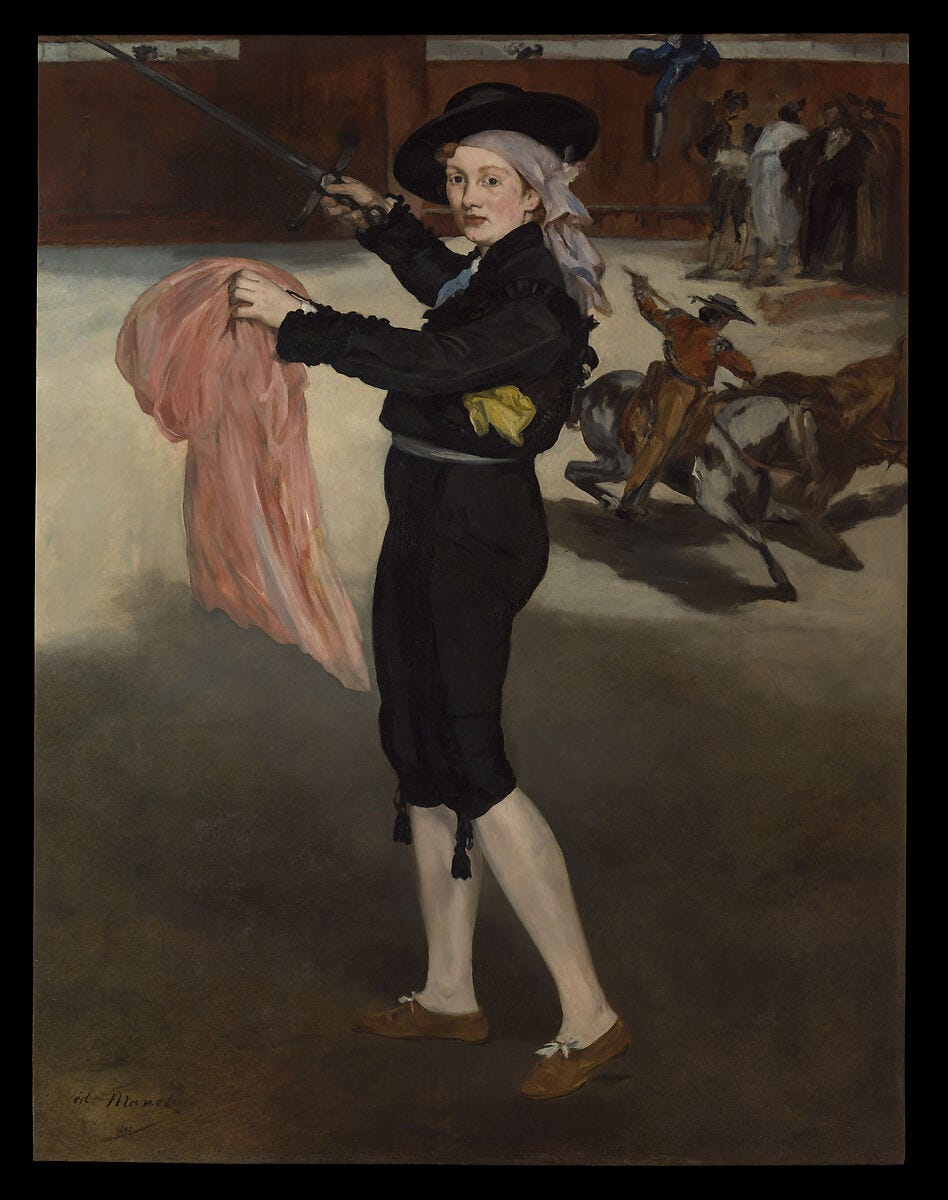"Some Wretched Frenchman"
Édouard Manet shows "Le Déjeuner sur l’herbe" at the Salon des Refusés, and becomes the most notorious painter in Paris.
This essay is part of the series The Life of Édouard Manet. To read future essays in this series and gain access to the full archive, become a paid subscriber today:

In the spring of 1863, Édouard Manet received news from the Salon. All of his works were rejected by the jury.
That year was a blood-bath. Éugene Delacroix did not participate in jury deliberations (in fact, he would pass away that August), so there was no one to fight for young, avant-garde artists. A whopping 2,800 works were rejected, and the 5,600 that were accepted represented the work of only 988 painters. For comparison, in 1861, the year that Manet made his Salon debut, the jury accepted 1,289 painters.1
One of Manet’s works that was ultimately rejected was Music in the Tuileries Gardens (1862). Its subject was one that would eventually exemplify the Impressionist ethos—a snapshot of modern life in Paris, rendered in especially vibrant hues thanks to the recent innovation of synthetic pigment. Manet decided to show this painting, as well as Spanish Dancers (1862) and Mademoiselle V… in the Costume of an Espada (1862) at the commercial gallery Martinet’s. Critics lampooned his radical use of color: “a medly of red, blue, yellow, and black which is a caricature of color and not color itself.”2
When Delacroix attended the exhibit at Martinet’s, the aging Romantic was appalled by the jeering visitors who turned their noses up at Manet’s art. As he stormed out, Delacroix loudly proclaimed, “I regret not to have been able to defend this man.”3
By this point, Manet was asserting himself as a youthful leader among a new cohort of painters. Now in his early thirties, Manet had a bit more experience than the newcomers on the scene, including Edgar Degas, whom he befriended around this time. Manet held court at the Café de Bade, where a growing audience of painters and writers spent evenings around his table. They debated everything from politics to art and society. Now, the subject of the day was the Salon’s seismic rejection of artists who deviated even modestly from the establishment’s norms.

For readers who many wonder why painters craved official acceptance, remember that the French art market remained quite centralized at this point in history. Buyers would often refuse to purchase works rejected by the Salon, as its jury was deemed the ultimate arbiter of taste. Rejection therefore wasn’t just a matter of prestige—money was at stake, too. And as is often the case, where money is involved, corruption often follows. Many jury members prioritized voting for their friends.
The jury’s “massacre” posed a pesky problem for Napoleon III.


